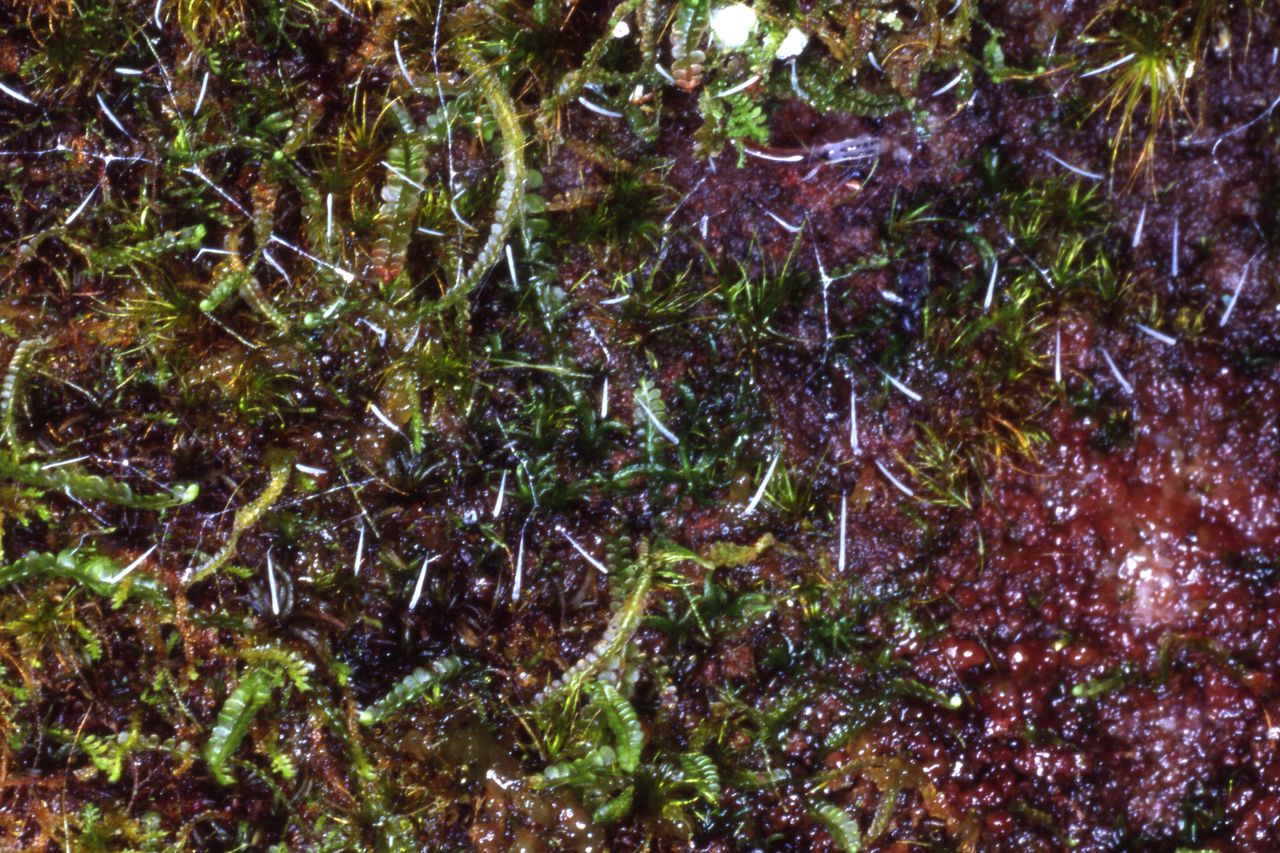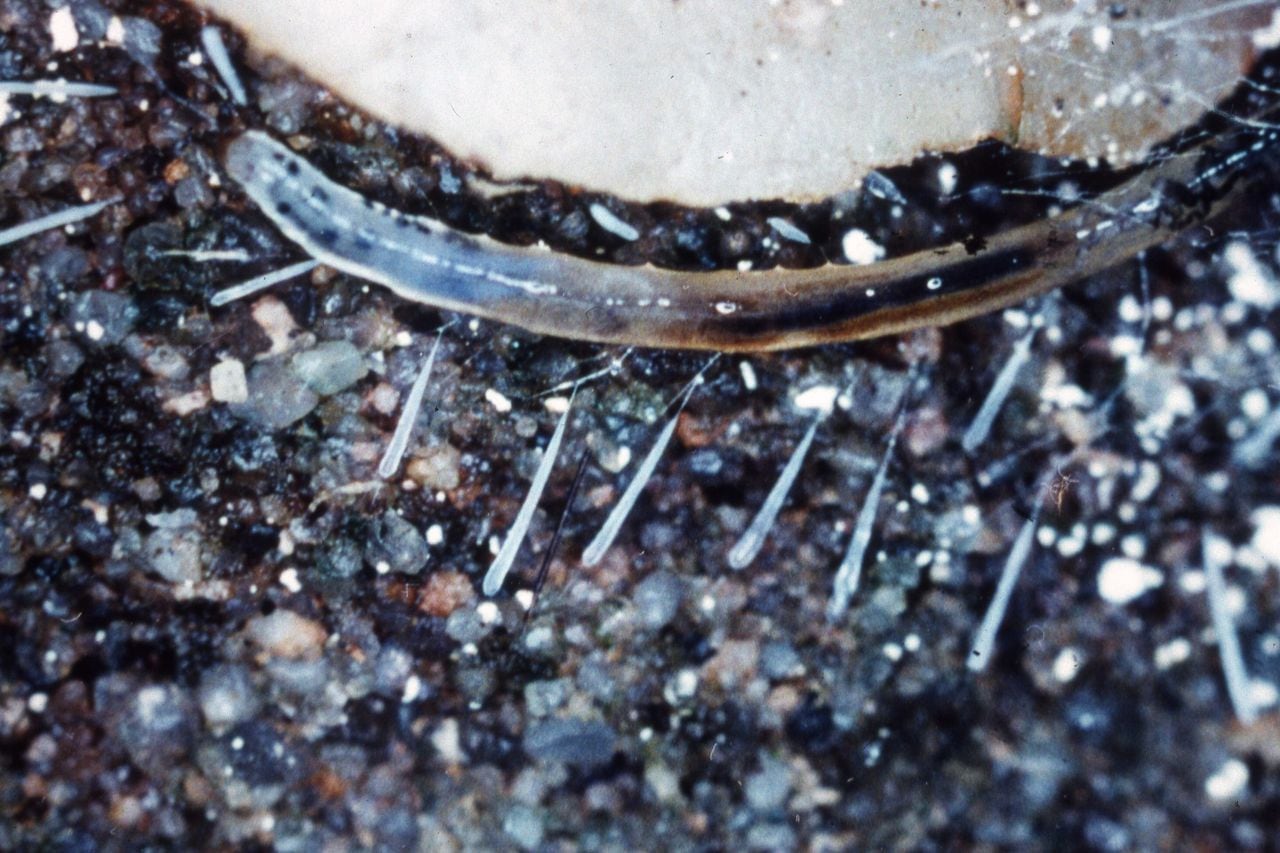Glowing fly larvae gives Alabama rare natural light show
From March to October, the damp, moss-covered cliff walls of Dismals Canyon light up with the pale blue glow of… bioluminescent bugs?
For decades, visitors and biologists alike were left mystified by the extremely tiny, glowing worm-like organisms lining the canyon walls. Less than a centimeter long, these glowing spots presented a tiny but beautiful enigma.
Locals and visitors started calling them the Dismalites, named after the location, but there was little understanding of what they actually were.
Eventually researchers determined that these Dismalites were not glowworms exactly, but rather larvae of the only bioluminescent fly species in North America. These tiny carnivorous fly larvae use their light to draw in other insects, which get trapped in mucus-like spindles that the larvae produce to capture their prey.
“They’re quite uniquely using their bioluminescence as a means of drawing of prey to them,” said Gary Mullen, a retired entomologist from Auburn University who studied the Dismalites for decades. “They’re not out hunting for the prey, they just sit in wait.”
Close-up shot of a Dismalite, a bioluminescent fly larvae at Dismals Canyon in Franklin County, Ala.Gary Mullen
A bioluminescent, carnivorous fly that uses chemical reactions to draw other insects to a premature death, all while providing humans with an incredible night sky scene on the inside of a cavern? That makes the Dismalites a worthy addition to our list of Alabama’s weirdest animals.
Visitors have compared seeing large groups of Dismalites on the cliff faces to looking up at the stars — a dark canvas pierced by dots of blue-white light. The Dismals Canyon website (the land is privately owned) says that sometimes it’s hard to tell where the top of the cliff face ends and the night sky begins.
“It really is very suggestive of a clear winter night when the sky is so dark and you have those pinpoints of starlight,” Mullen said.
Those tiny glowing spots are the larvae of a fly species in the Appalachian states called Orfelia fultoni. Mullen and his students at Auburn eventually identified the species by carrying Dismalites back to their lab, figuring out what they eat, and raising them to maturity.
The tiny creatures are hard to study in the field, and really hard to photograph. Mullen said the Dismalites will retreat if they see a flashlight or just about any form of artificial light.
Mullen said even professional camera crews struggle to get video footage of the Dismalites that does them justice. He said production companies working with the Disney Channel, National Geographic, the Travel Channel and others have tried, with limited success.

Dismalites, bioluminescent fly larvae, nestled in a mossy surface at Dismals Canyon.Gary Mullen, Auburn University
“We spent weeks with the film crews up there,” Mullen said. “It’s so challenging to try to get certainly something in color here. You do well just to be able to film them because they are so sensitive to any disturbance or light. And so, you know, they experimented with all kinds of different wavelengths and lumens and so forth trying to and nobody yet has been successful.
“Nobody’s been able to produce the visual quality live to record their activity or even effectively show the illumination.”
The Dismalites themselves are not that rare, Mullen said. The Orfelia fultoni flies have been identified in Alabama, Georgia, Tennessee, North Carolina and Virginia. What makes Dismals Canyon so special is how many of the creatures gather in one place, and how accessible they are to people.
“The uniqueness [at Dismals Canyon] is the concentration,” Mullen said. “There’s no place else for this particular species that even begins to approach the uniqueness of that locale right here in Alabama.”
The steep canyon walls at Dismals stay cool, moist and shaded year-round, providing the Dismalites the perfect nursery. Instead of a single tiny point of light, which may be almost impossible to see, visitors can see the flies by the thousands at the right time of year.
Mullen said the Dismalites generally reproduce twice a year — once in the spring and then again in the fall. He said it’s possible to see some Dismalites from March through October, but the highest concentrations occur around the end of April and then again in September, though that can vary from year to year.
Night tours of the privately-owned Canyons can be scheduled from through the Dismals Canyon web site beginning in March until the Dismalites go dormant for the winter.
